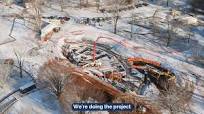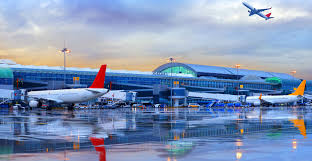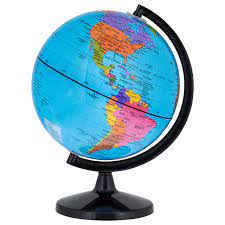
Travel Guide: Getting from HNL to Waikiki
If you’re planning a trip to Hawaii, chances are you’ll be flying into Honolulu International Airport (HNL) and heading straight to the stunning shores of Waikiki. As one of the most popular tourist destinations in Hawaii, Waikiki offers a vibrant mix of beautiful beaches, world-class resorts, and an array of dining and entertainment options. Here’s a handy guide on how to get from HNL to Waikiki so you can start enjoying paradise as soon as possible.
Airport Shuttle Services:
Upon arrival at HNL, you’ll find several shuttle services available just outside the baggage claim area. These shuttles provide convenient transportation directly to your hotel in Waikiki. Many shuttle companies offer shared rides, which can be a cost-effective option if you’re traveling with a group or on a budget.
Taxis and Rideshares:
Taxis and rideshare services like Uber and Lyft are readily available at HNL. Simply follow the signs to the designated pickup area outside the terminal. While taxis provide a direct route to your destination, rideshares offer the added benefit of potentially lower fares and the convenience of booking through an app.
Rental Cars:
If you prefer the freedom of having your own wheels, renting a car is an excellent option. Numerous car rental agencies have counters conveniently located at HNL, making it easy for you to pick up your vehicle upon arrival. From there, it’s just a short drive along Nimitz Highway and Ala Moana Boulevard to reach Waikiki.
Public Transportation:
For those looking for an affordable option, public transportation is available from HNL to Waikiki. The city’s public bus system, known as TheBus, operates several routes that connect the airport with various parts of Oahu, including Waikiki. Look for Route 19 or Route 20, which will take you directly to Waikiki. Keep in mind that public buses may have limited space for luggage, so plan accordingly.
Airport Shuttles and Hotel Transfers:
Many hotels in Waikiki offer their own airport shuttles or complimentary transfers for guests. Be sure to check with your hotel prior to arrival to see if this service is available. This can be a convenient and hassle-free option, especially if you’re staying at a larger resort.
Once you’ve made the journey from HNL to Waikiki, get ready to soak up the sun, surf the waves, and indulge in the vibrant island culture that makes Hawaii so special. Whether you choose a shuttle service, taxi, rental car, public transportation, or hotel transfer, getting from HNL to Waikiki is a breeze. So sit back, relax, and get ready for an unforgettable Hawaiian adventure!
6 Advantages of Traveling from HNL to Waikiki: Beaches, Convenience, and More!
- Easy access to Waikiki’s world-famous beaches and attractions.
- Shorter travel time than other routes from the mainland US.
- Affordable prices for flights from Honolulu International Airport (HNL).
- A wide variety of restaurants, shopping centers, and entertainment options in Waikiki.
- Beautiful views of the Pacific Ocean during the flight from HNL to Waikiki Beach.
- An abundance of activities in Waikiki such as surfing, snorkeling, and kayaking that can be enjoyed year-round thanks to Hawaii’s tropical climate!
Challenges of Traveling from Honolulu to Waikiki: Long Flight Time, Cost Considerations, and Limited Flight Options
- Flight time is long – the flight from Honolulu to Waikiki takes over an hour.
- Cost can be expensive – depending on the airline, tickets for this route can cost more than other routes in Hawaii.
- Limited flight options – there are fewer direct flights from Honolulu to Waikiki compared to other Hawaiian destinations.
Easy access to Waikiki’s world-famous beaches and attractions.
One of the major advantages of traveling from Honolulu International Airport (HNL) to Waikiki is the easy access it provides to the world-famous beaches and attractions that make this destination so iconic. Located just a few miles away, Waikiki offers a paradise-like setting with its golden sands, crystal-clear waters, and breathtaking views of Diamond Head.
Upon arriving at HNL, travelers can quickly make their way to Waikiki via various transportation options. Whether you choose an airport shuttle, taxi, rideshare service, rental car, or public transportation, you’ll find that reaching Waikiki is a breeze. This means that within a short time after landing on the beautiful island of Oahu, visitors can find themselves lounging on the shores of Waikiki Beach or exploring the vibrant streets lined with shops and restaurants.
Waikiki is renowned for its stunning beaches that cater to all types of beachgoers. Whether you’re looking for a relaxed spot to sunbathe or seeking thrilling water activities like surfing or paddleboarding, there’s something for everyone along this stretch of coastline. With easy access from HNL to Waikiki, you can quickly immerse yourself in the warm waters of the Pacific Ocean and soak up the Hawaiian sun.
Beyond its pristine beaches, Waikiki offers an array of attractions that are easily accessible from HNL. Take a leisurely stroll along Kalakaua Avenue and experience the vibrant energy of this bustling thoroughfare known for its luxury shopping boutiques, lively nightlife scene, and world-class dining establishments. Don’t forget to visit iconic landmarks like Diamond Head State Monument or explore cultural sites such as the Honolulu Museum of Art.
In addition to its natural beauty and urban charm, Waikiki also serves as a convenient base for exploring other parts of Oahu. From here, visitors can embark on excursions to the North Shore, Pearl Harbor, or venture into the lush valleys and scenic landscapes that make up the island’s interior.
With easy access from HNL to Waikiki, travelers can make the most of their time in Hawaii by quickly immersing themselves in the beauty, culture, and excitement that this world-famous destination has to offer. So pack your swimsuit, grab your sunglasses, and get ready for an unforgettable experience as you dive into Waikiki’s captivating beaches and attractions.
Shorter travel time than other routes from the mainland US.
Traveling from the mainland US to Hawaii is an exciting journey, and if your destination is Waikiki, flying into Honolulu International Airport (HNL) has a significant advantage: shorter travel time compared to other routes.
HNL serves as the main gateway to the beautiful island of Oahu, where Waikiki is located. With numerous direct flights available from major cities across the mainland US, travelers can enjoy the convenience of a shorter flight duration. This means less time spent in transit and more time to relax and explore the stunning beaches and vibrant atmosphere of Waikiki.
Compared to alternative routes that may require layovers or connecting flights, flying directly into HNL allows you to reach your destination faster. This is especially beneficial for those who want to maximize their vacation time or have limited availability for travel.
Additionally, HNL offers a wide range of airlines and flight options, providing flexibility in choosing departure times and accommodating various travel preferences. Whether you’re seeking an early morning arrival or a late-night flight, there are plenty of options available to suit your needs.
Once you land at HNL, transportation options abound to get you swiftly from the airport to Waikiki. Whether you choose an airport shuttle service, taxi, rideshare, rental car, or public transportation like TheBus, reaching your hotel or resort in Waikiki is a seamless process.
So if you’re looking for a convenient and time-efficient journey from the mainland US to Waikiki, flying into HNL is undoubtedly a pro worth considering. Enjoy a shorter travel time and dive right into the tropical paradise that awaits you in beautiful Waikiki!
Affordable prices for flights from Honolulu International Airport (HNL).
Affordable Prices for Flights from Honolulu International Airport (HNL) to Waikiki
When it comes to planning a trip to the beautiful shores of Waikiki, finding affordable flights can make all the difference. Luckily, travelers flying into Honolulu International Airport (HNL) have the advantage of enjoying competitive prices for their journey to this iconic Hawaiian destination.
Honolulu International Airport serves as a major hub for both domestic and international flights, offering a wide range of airlines and routes. This healthy competition among airlines often leads to more affordable prices for travelers looking to visit Waikiki.
With numerous airlines operating flights to HNL, travelers have the flexibility to choose from different carriers and take advantage of various deals and promotions. By comparing prices and being flexible with travel dates, visitors can often find great bargains on flights from HNL to Waikiki.
Additionally, HNL is well-connected with many major cities in the United States and around the world. This connectivity ensures that there are ample options for travelers seeking affordable flights from various locations. Whether you’re flying from the mainland United States or internationally, HNL offers a gateway to paradise at a reasonable cost.
Moreover, the availability of budget airlines and low-cost carriers at HNL further enhances affordability. These carriers often provide discounted fares without compromising on safety or comfort, allowing budget-conscious travelers to reach Waikiki without breaking the bank.
By taking advantage of the affordable prices for flights from HNL to Waikiki, visitors can allocate more of their travel budget towards exploring the island’s attractions, indulging in delicious cuisine, or experiencing exciting activities. From relaxing on world-famous beaches to immersing oneself in Hawaiian culture and history, every dollar saved on airfare means more opportunities for unforgettable experiences in Waikiki.
So whether you’re planning a family vacation or an adventurous getaway with friends, consider flying into Honolulu International Airport (HNL) for its affordable flight options to Waikiki. With the savings on airfare, you can make the most of your trip and create lasting memories in this tropical paradise.
Discover the Vibrant Delights of Waikiki: A Haven for Food, Shopping, and Entertainment
When it comes to finding a destination that offers an unparalleled variety of restaurants, shopping centers, and entertainment options, look no further than Waikiki. Nestled along the beautiful shores of Hawaii’s Oahu island, Waikiki is a vibrant neighborhood that caters to every taste and preference.
Food enthusiasts will be delighted by the diverse culinary scene in Waikiki. From casual beachfront cafes to upscale dining establishments, there is something for everyone. Savor the flavors of traditional Hawaiian cuisine like fresh poke bowls or indulge in international fare from around the world. Whether you’re craving sushi, Italian pasta, or mouthwatering seafood, you’ll find it all within walking distance in Waikiki.
Shopaholics will find their paradise in Waikiki’s numerous shopping centers and boutiques. Explore luxury brands at the Royal Hawaiian Center or browse through local shops offering unique Hawaiian souvenirs and handmade crafts. From high-end fashion to surf gear and everything in between, you’ll be spoiled for choice as you stroll along Kalakaua Avenue.
Beyond its culinary and retail offerings, Waikiki is also a hub for entertainment. Catch a captivating hula performance showcasing Hawaii’s rich cultural heritage or enjoy live music at one of the many bars and lounges scattered throughout the area. For those seeking excitement after dark, Waikiki boasts a lively nightlife scene with clubs and bars that cater to various tastes.
The beauty of it all is that these incredible experiences are just steps away from your hotel in Waikiki. Whether you’re staying at a renowned resort or a cozy boutique hotel, you’ll have easy access to all the wonders this neighborhood has to offer.
So whether you’re a food lover looking to tantalize your taste buds with diverse flavors, a shopaholic seeking the latest trends or unique local finds, or simply someone who wants to be entertained, Waikiki has it all. Immerse yourself in its vibrant atmosphere, and let the magic of this tropical paradise captivate you.
Beautiful views of the Pacific Ocean during the flight from HNL to Waikiki Beach.
Experience the Beauty: Stunning Pacific Ocean Views on your Flight from HNL to Waikiki Beach
As you embark on your journey from Honolulu International Airport (HNL) to the iconic Waikiki Beach, prepare yourself for a visual treat that will take your breath away. The flight from HNL to Waikiki offers passengers the opportunity to witness stunning views of the Pacific Ocean, creating a truly unforgettable travel experience.
From the moment you take off, you’ll be treated to panoramic vistas of crystal-clear turquoise waters extending as far as the eye can see. As your aircraft glides above the ocean’s surface, you’ll witness the interplay of sunlight dancing on gentle waves, creating a mesmerizing display of shimmering hues. The sight is nothing short of awe-inspiring and serves as a gentle reminder of why Hawaii is often referred to as paradise.
The aerial perspective allows you to appreciate the vastness and grandeur of the Pacific Ocean like never before. You’ll witness how it stretches out endlessly, meeting the horizon in a seamless blend of blues and greens. The tranquil beauty of this vast expanse can evoke a sense of serenity and wonder within even the most seasoned travelers.
Throughout your flight, keep an eye out for other natural wonders that dot the ocean’s surface. You might catch glimpses of playful dolphins leaping through waves or graceful sea turtles gliding effortlessly beneath you. If you’re lucky, you might even spot majestic humpback whales breaching in the distance during their annual migration.
As you approach Waikiki Beach, get ready for an incredible view that combines nature’s beauty with man-made marvels. The contrast between towering skyscrapers lining the shoreline and pristine white-sand beaches against a backdrop of clear blue waters creates an enchanting sight that epitomizes paradise.
So sit back, relax, and let yourself be captivated by the breathtaking views during your flight from HNL to Waikiki Beach. Allow the beauty of the Pacific Ocean to set the stage for an unforgettable Hawaiian adventure, where every moment is filled with wonder and awe.
An abundance of activities in Waikiki such as surfing, snorkeling, and kayaking that can be enjoyed year-round thanks to Hawaii’s tropical climate!
An Abundance of Activities in Waikiki: Year-Round Fun in Hawaii’s Tropical Paradise
Waikiki, the iconic beachfront neighborhood in Honolulu, offers visitors an incredible array of activities to enjoy throughout the year. Thanks to Hawaii’s tropical climate, you can indulge in thrilling water sports and outdoor adventures no matter when you visit. From surfing and snorkeling to kayaking and more, there’s something for everyone in this vibrant coastal destination.
Surfing is undoubtedly one of the most popular activities in Waikiki. With its gentle rolling waves, this renowned surf spot is perfect for beginners looking to catch their first wave or experienced surfers seeking a thrilling ride. Lessons are readily available from local surf schools, making it easy for anyone to experience the joy of riding the waves.
For those who prefer exploring underwater wonders, snorkeling is a must-do activity in Waikiki. The crystal-clear waters teem with colorful marine life, providing an unforgettable snorkeling experience. Grab your snorkel gear and venture out near the famous Diamond Head or Hanauma Bay Nature Preserve to discover vibrant coral reefs and swim alongside tropical fish.
If you’re up for some paddling adventure, kayaking along the coastline of Waikiki is a fantastic choice. Rent a kayak or join a guided tour to explore hidden coves, picturesque beaches, and breathtaking views of Diamond Head. Glide through calm waters as you soak up the beauty of Hawaii’s coastline from a unique perspective.
Beyond water sports, Waikiki offers an array of land-based activities as well. Take a leisurely stroll along the iconic Kalakaua Avenue lined with shops, restaurants, and entertainment venues. Indulge in retail therapy at luxury boutiques or savor delicious Hawaiian cuisine at local eateries.
As day turns into night, immerse yourself in Waikiki’s vibrant nightlife scene. Enjoy live music performances at beachside bars or witness traditional Hawaiian hula dancing and fire shows that showcase the rich culture of the islands.
The best part about these activities in Waikiki is that they can be enjoyed year-round. Hawaii’s tropical climate ensures warm temperatures and inviting waters, making every season ideal for outdoor adventures. So whether you’re planning a summer getaway or a winter escape, Waikiki promises endless fun and excitement.
Experience the thrill of riding the waves, explore underwater wonders, paddle along the coastline, and immerse yourself in the vibrant atmosphere of Waikiki. With its abundance of activities and Hawaii’s year-round tropical climate, this coastal paradise is truly a dream destination for adventure seekers and beach lovers alike.
Flight time is long – the flight from Honolulu to Waikiki takes over an hour.
Navigating the Flight Time from HNL to Waikiki
When it comes to traveling from Honolulu International Airport (HNL) to the beautiful shores of Waikiki, there is one downside that some travelers may encounter: the flight time. The journey between HNL and Waikiki takes just over an hour, which can feel a bit lengthy for those eager to start their Hawaiian adventure.
While an hour may seem like a significant chunk of time, it’s important to keep in mind that this flight duration includes various factors such as boarding, taxiing, and landing. Additionally, the actual distance between HNL and Waikiki is relatively short. However, due to logistical considerations and air traffic control protocols, flights between these two points may take a bit longer than expected.
Fortunately, there are ways to make the most of this flight time. Consider using this opportunity to relax and unwind after your journey or engage in some in-flight entertainment. Many airlines offer movies, music, or even Wi-Fi connectivity during the flight, allowing you to catch up on your favorite shows or stay connected with loved ones.
Moreover, take advantage of the breathtaking views during your short flight. As you soar above Oahu’s stunning landscapes and turquoise waters, you’ll be treated to glimpses of paradise from above. So sit back, enjoy the scenery out your window, and let anticipation build for all the incredible experiences that await you in Waikiki.
Lastly, keep in mind that this short flight is just a small part of your overall Hawaiian vacation experience. Once you land in Waikiki and step foot on its golden beaches or explore its vibrant streets filled with shops and restaurants, any concerns about flight time will quickly fade away.
Remember that every journey has its own pace and rhythm. Embrace the opportunity to savor each moment as you transition from HNL to Waikiki. After all, it’s all part of the adventure that makes Hawaii such a sought-after destination.
Cost can be expensive – depending on the airline, tickets for this route can cost more than other routes in Hawaii.
One of the drawbacks of traveling from HNL to Waikiki is the potential cost. Depending on the airline you choose, tickets for this route can be more expensive compared to other routes within Hawaii. It’s important to consider your budget and explore different options before making a decision.
While there are several airlines that operate flights between HNL and Waikiki, some carriers may charge higher fares due to factors such as demand, time of travel, or availability. It’s advisable to compare prices and check for any ongoing promotions or discounts that could help reduce the cost.
However, it’s essential to remember that the cost of transportation is just one aspect of your overall trip. Waikiki offers a plethora of attractions and experiences that make it a highly sought-after destination. From its iconic beaches and stunning sunsets to its vibrant nightlife and cultural events, Waikiki truly offers something for everyone.
If you find that flights from HNL to Waikiki are beyond your budget, don’t despair! There are alternative transportation options available such as airport shuttles, taxis, rideshares, rental cars, or even public transportation like TheBus. These alternatives may offer more affordable ways to reach your desired destination while still allowing you to experience the beauty and excitement of Waikiki.
Remember, with proper planning and research, it’s possible to find a balance between cost and convenience when traveling from HNL to Waikiki. By exploring different options and considering your priorities, you can make the most out of your trip without breaking the bank. So don’t let the potential expense deter you from experiencing all that Waikiki has to offer – paradise awaits!
Limited flight options – there are fewer direct flights from Honolulu to Waikiki compared to other Hawaiian destinations.
One of the downsides of traveling from Honolulu International Airport (HNL) to Waikiki is the limited flight options available. Unlike other Hawaiian destinations, there are fewer direct flights connecting HNL and Waikiki.
While HNL serves as the main gateway to Hawaii, with numerous airlines operating flights to and from the airport, most of these flights are geared towards connecting passengers to other destinations or neighboring islands. As a result, finding a direct flight from HNL to Waikiki can be more challenging.
Travelers looking to reach Waikiki from HNL often have to rely on alternative transportation options, such as shuttles, taxis, rideshares, or public transportation. These options may require additional time and effort compared to simply hopping on a direct flight.
However, it’s important to note that despite this limitation, there are still several convenient ways to get from HNL to Waikiki. Shuttle services and taxis are readily available at the airport, providing efficient transportation directly to your destination. Additionally, rental cars offer flexibility and freedom for those who prefer driving themselves.
While it may take a bit more planning and consideration when it comes to flight options from HNL to Waikiki, rest assured that once you arrive in paradise, the stunning beaches and vibrant atmosphere of Waikiki will make it all worthwhile. So embrace the journey and get ready for an unforgettable experience in one of Hawaii’s most iconic destinations.








